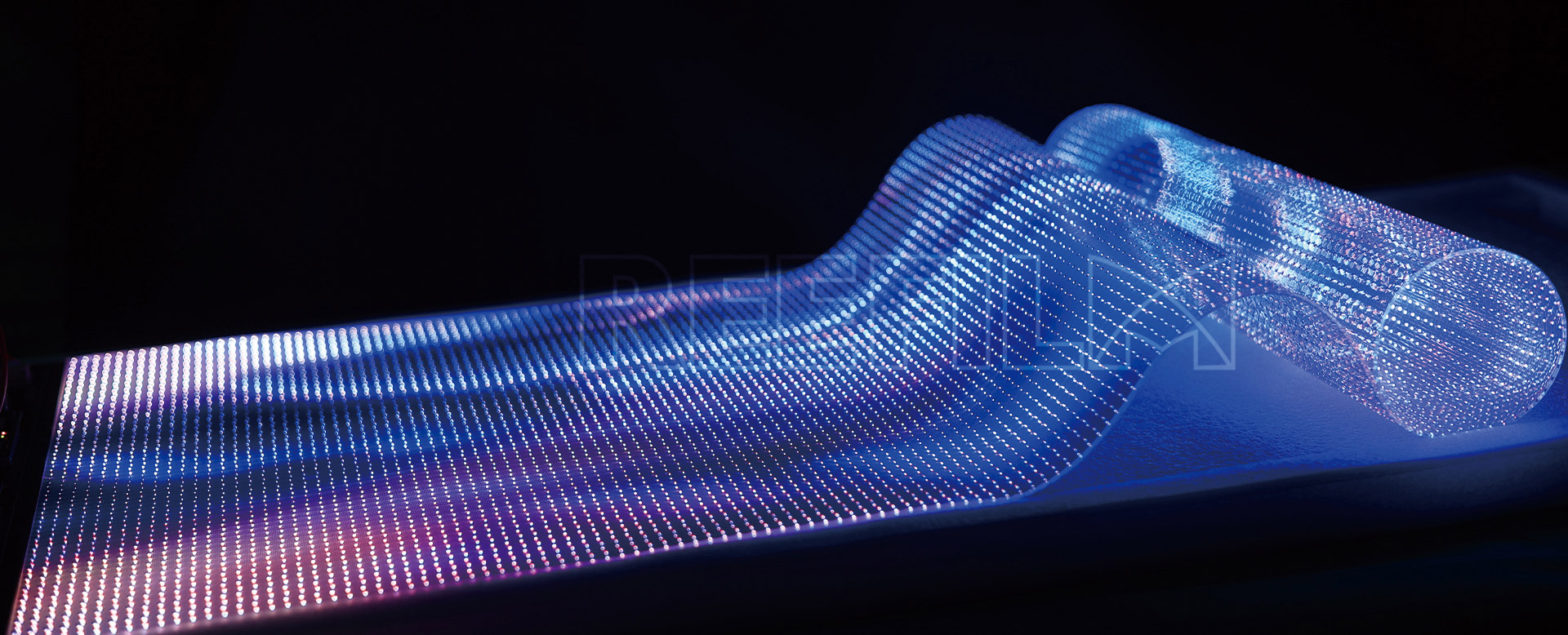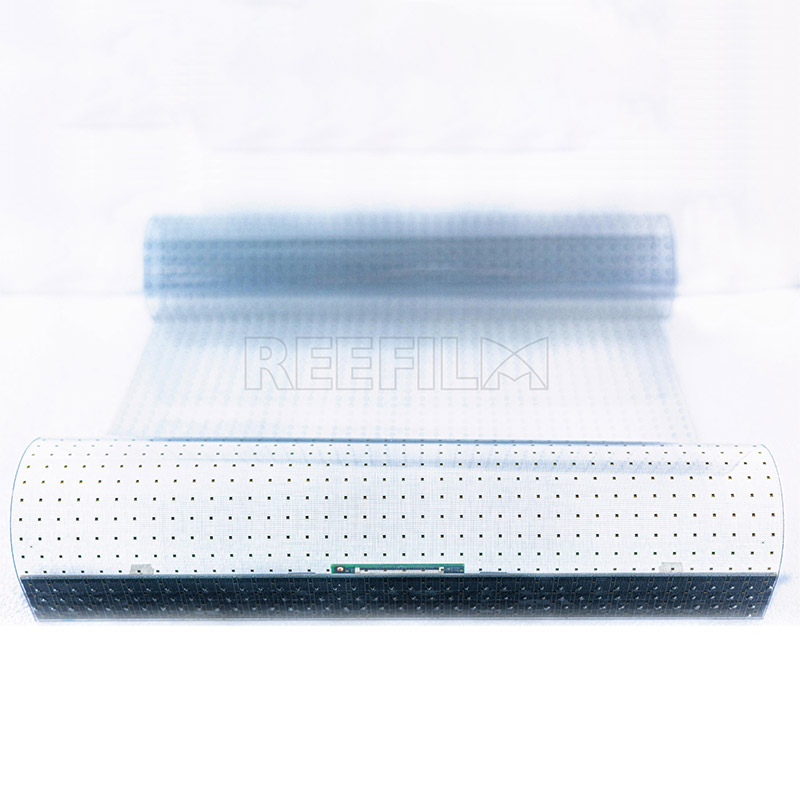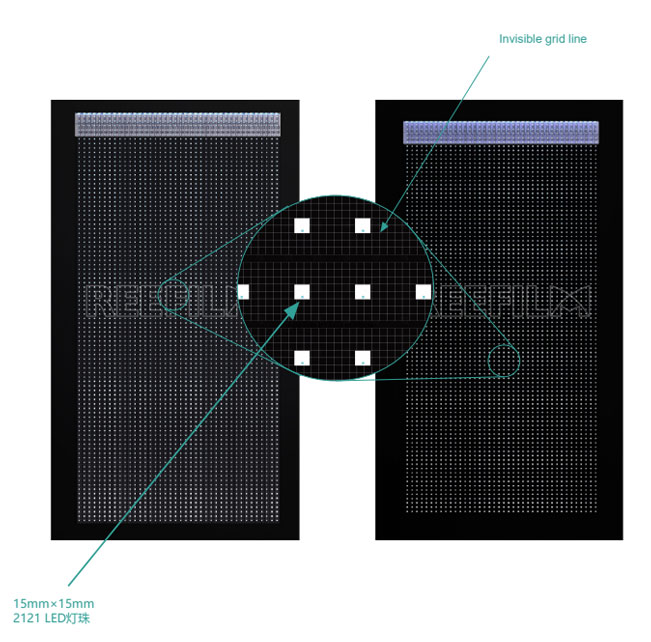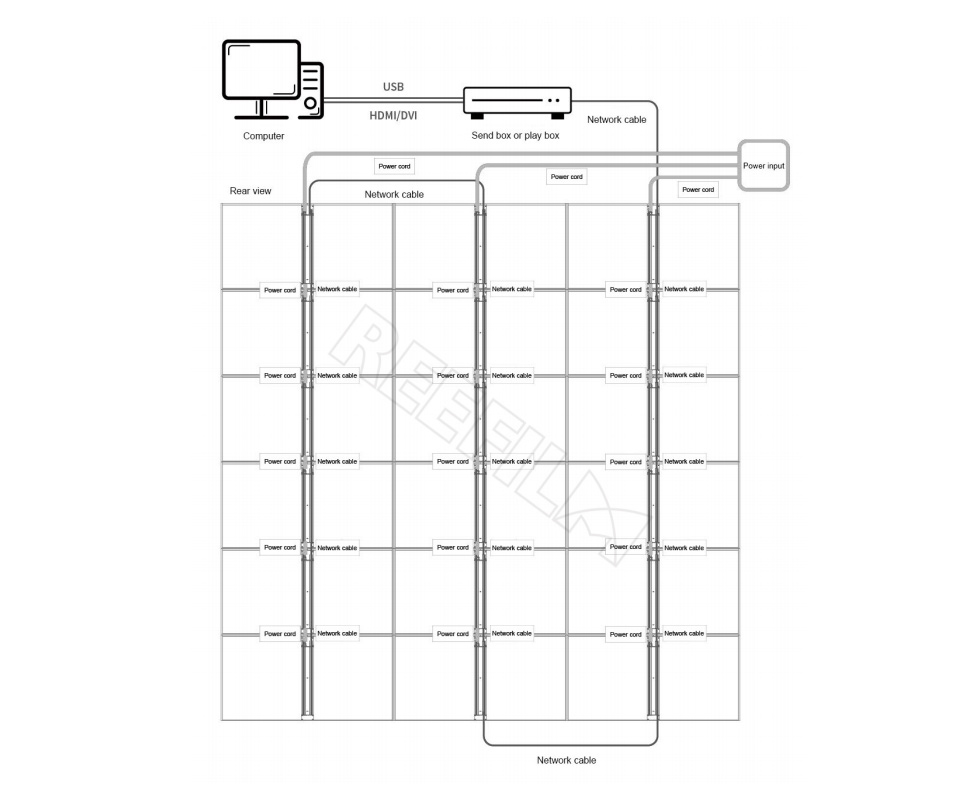

The technology behind a thin flexible LED Screen is based on micro-LEDs, which are miniature light-emitting diodes. These micro-LEDs are incredibly small, allowing for a high pixel density and superior image quality. The vibrant colors, sharp contrasts, and wide viewing angles offered by thin Flexible LED Screens make them a preferred choice for applications such as digital signage, advertising displays, and immersive entertainment experiences.
In addition to their visual appeal, thin flexible LED screens also offer practical advantages. Due to their lightweight and flexible nature, they are easy to transport and install, making them suitable for temporary setups or events. Furthermore, their durability and resistance to impact and vibration make them reliable in various environments, including outdoor installations.
Another exciting aspect of thin flexible LED screens is their energy efficiency. Reefilm LED technology allows for precise control over individual pixels, enabling energy savings compared to traditional display technologies. This energy efficiency is not only environmentally friendly but also reduces operating costs, making thin flexible LED screens an economical choice for businesses and organizations.

Product features
| LED | High transmittance | Easy to install | AB version |
independent research and mini LED device, industry leading | The transmittance is more than 90%, which does not affect the glass daylighting | without steel structure, just stick the thin screen slightly and connect the power signal | |
| Flexible | Light and thin | UV resistance | Flame retardanyt |
| as thin as 2.5mm, as light as 5kg/m2 | 5~10 years can ensure no yellowing | flame retardant grade V1 |
Product parameter table
| Module size (mm) | 990*390 | Peak power | 600w/㎡ |
| LED light | REE2022 | Average power | 200w/㎡ |
| Pixel composition | R1G1B1 | Work environment | Temperature -20-55 Humidity10-90% |
| Pixel spacing (mm) | 15*15 | Weight | 1.3kg |
| Module pixel | 66*26=1716 | Thickness | 2.5mm |
| Pixel/㎡ | 4356 | Drive mode | static state |
| Brightness | 2000/4000 | Control system | Nova/Colorlight |
| Permeability | 94% | Typical value of life | 100000H |
| Angle of view ° | 160 | Grayscale level | 16bit |
| input voltage | AC110-240V50/60Hz | Refresh rate | 3840Hz |

The first notable feature of an ultra thin-flexible LED screen is its slim profile. These screens are incredibly thin and lightweight, making them ideal for installations where space is limited or a sleek aesthetic is desired. The slim design allows for seamless integration into various environments, such as retail spaces, architectural installations, and event venues. It also makes them easy to handle and transport, reducing logistical challenges.
The flexibility of ultra-thin LED screens is another significant advantage. These screens can be bent, curved, or even rolled, enabling creative and dynamic display configurations. Whether it's wrapping around pillars, creating curved video walls, or adapting to irregular surfaces, the flexibility of these screens offers endless design possibilities. This versatility allows designers and architects to push boundaries and create visually stunning displays that capture attention and engage viewers.
Despite their thin and flexible nature, ultra-thin LED screens deliver exceptional image quality. The LED technology used in these screens ensures vibrant colors, high contrast ratios, and excellent brightness levels. The images displayed are sharp, clear, and captivating, enhancing the impact of the content being presented. Whether used for advertising, entertainment, or information display, these screens provide a visually impressive experience.
Energy efficiency is another advantage of ultra thin-flexible LED screens. LED technology is known for its energy-saving properties, consuming less power compared to traditional display technologies. This not only reduces operating costs but also contributes to a more sustainable and environmentally friendly solution. With the growing emphasis on energy conservation, these screens align with organizations' efforts to adopt greener practices.
Additionally, the durability and reliability of ultra thin-flexible LED screens make them suitable for various applications. They are designed to withstand the rigors of continuous use, ensuring a long lifespan and minimizing maintenance requirements. The screens are also built with robust materials that can withstand environmental factors such as humidity, temperature variations, and vibrations, making them suitable for indoor and outdoor installations.
In conclusion, ultra thin-flexible LED screen offer a combination of slim design, flexibility, image quality, energy efficiency, and durability. Their ability to conform to different surfaces and deliver captivating visuals makes them an ideal choice for a wide range of applications. As technology continues to advance, we can expect even more innovative and impressive solutions from the world of ultra thin-flexible LED screens.
An ultra-thin flexible LED screen refers to a display technology that utilizes light-emitting diodes (LEDs) arranged in a flexible and thin substrate material. These screens are designed to be lightweight, bendable, and capable of conforming to curved surfaces, making them suitable for various applications where traditional rigid screens cannot be used. The ultra-thin nature of these LED screens enables them to be seamlessly integrated into different environments, providing enhanced visual experiences.
Ultra-thin flexible LED screens consist of a matrix of tiny LEDs embedded in a flexible material such as plastic or polyimide. Each LED emits colored light when an electric current passes through it. The LEDs are arranged in a specific pattern, and by controlling the intensity of each LED, the screen can display different colors and create images or videos. The flexibility of the substrate material allows the screen to be bent or curved without affecting the functionality of the LEDs.
Ultra-thin flexible LED screens offer several advantages over traditional displays. Firstly, their thin and flexible nature allows for creative and unconventional designs, enabling the integration of displays into curved surfaces, clothing, or even wearable devices. Secondly, they are lightweight, making them easy to transport and install. Additionally, these screens consume less power and generate less heat compared to other display technologies. Finally, ultra-thin flexible LED screens provide excellent color reproduction, high contrast ratios, and wide viewing angles, resulting in immersive visual experiences.
Ultra-thin flexible LED screens find applications in various industries. They are commonly used in advertising and marketing, where they can be attached to curved surfaces or wrapped around objects to create eye-catching displays. They are also used in the entertainment industry, for example, in concerts or stage performances, to create dynamic and interactive visual effects. Furthermore, these screens are employed in the automotive sector, where they can be integrated into curved dashboards or incorporated into headrests to provide information or entertainment to passengers.
Yes, ultra-thin flexible LED screens are designed to be durable. The substrate material used in their construction is often resilient and can withstand bending or flexing without damage. Additionally, LED technology itself is known for its longevity and reliability. LED screens can have a long lifespan, and their brightness and image quality remain consistent over time. However, it is essential to handle these screens with care and follow the manufacturer's guidelines to ensure their optimal performance and longevity.
The future of ultra-thin flexible LED screens looks promising. As technology advances, we can expect even thinner and more flexible screens with improved resolution and color accuracy. This will open up new possibilities in fields such as architecture, interior design, and fashion, where seamless integration of displays into unconventional surfaces is desired. Moreover, advancements in manufacturing processes and cost reduction may lead to wider adoption of these screens, making them more accessible to consumers and businesses alike.
PDF download
![]() thin flexible led screen p15.pdf
thin flexible led screen p15.pdf